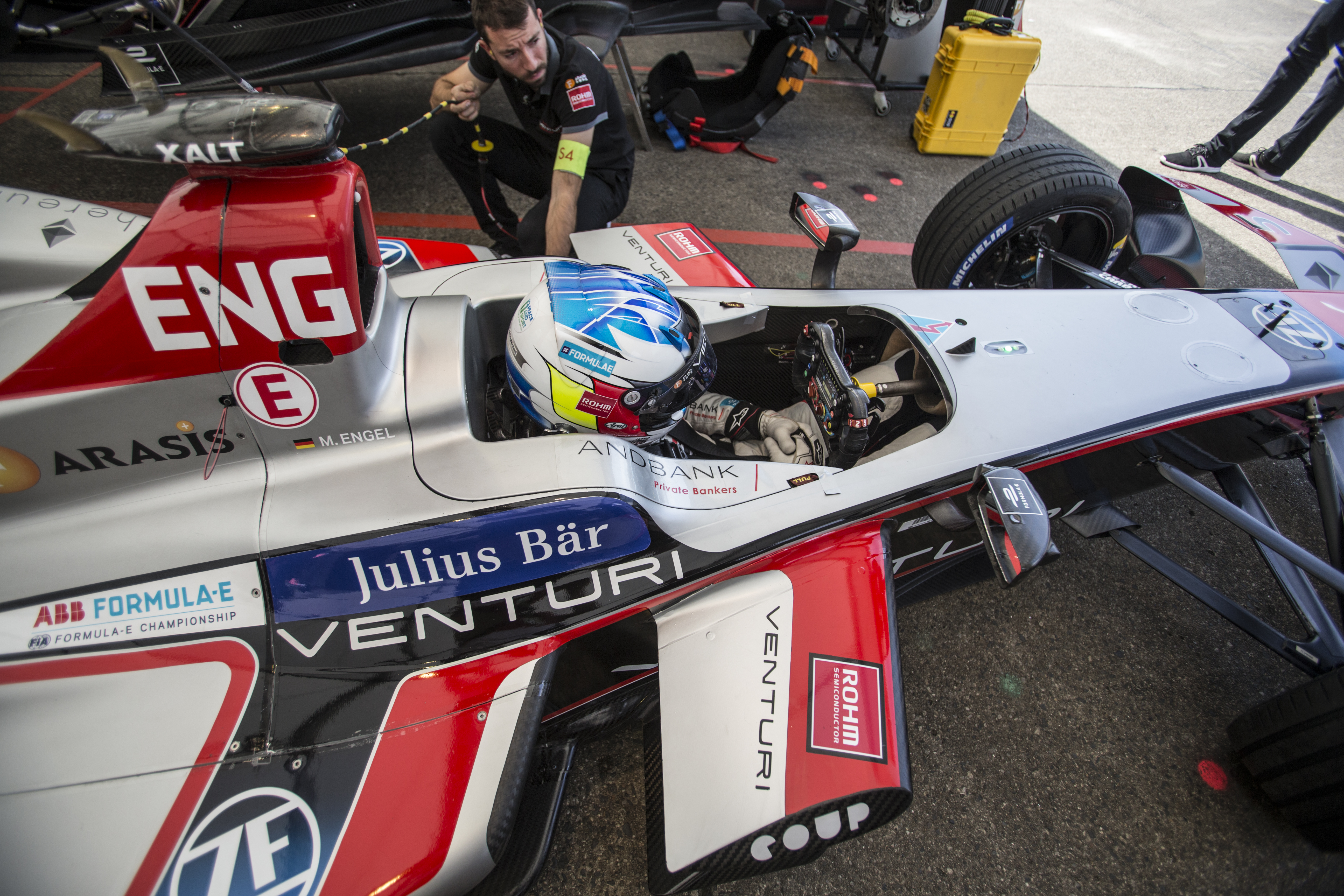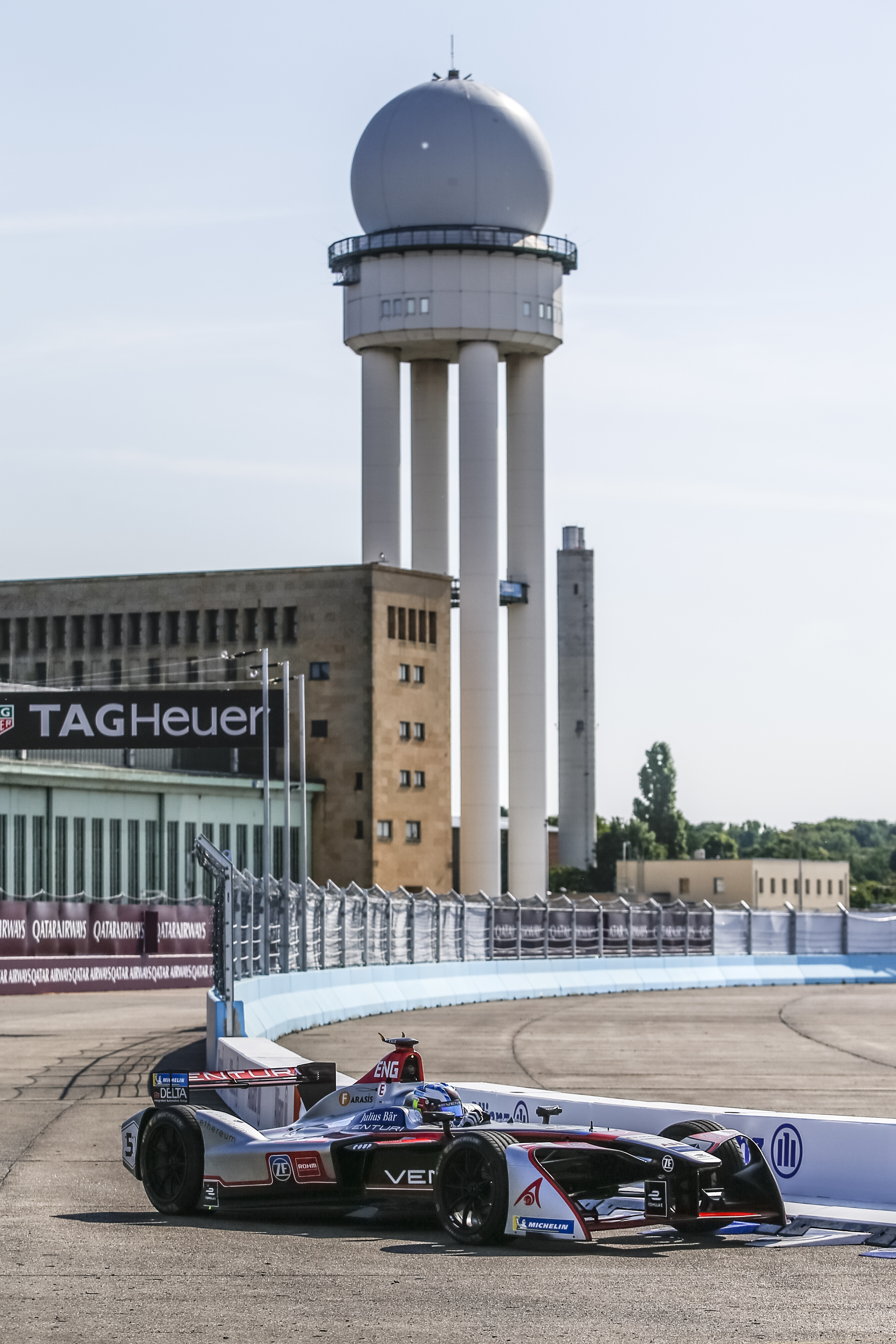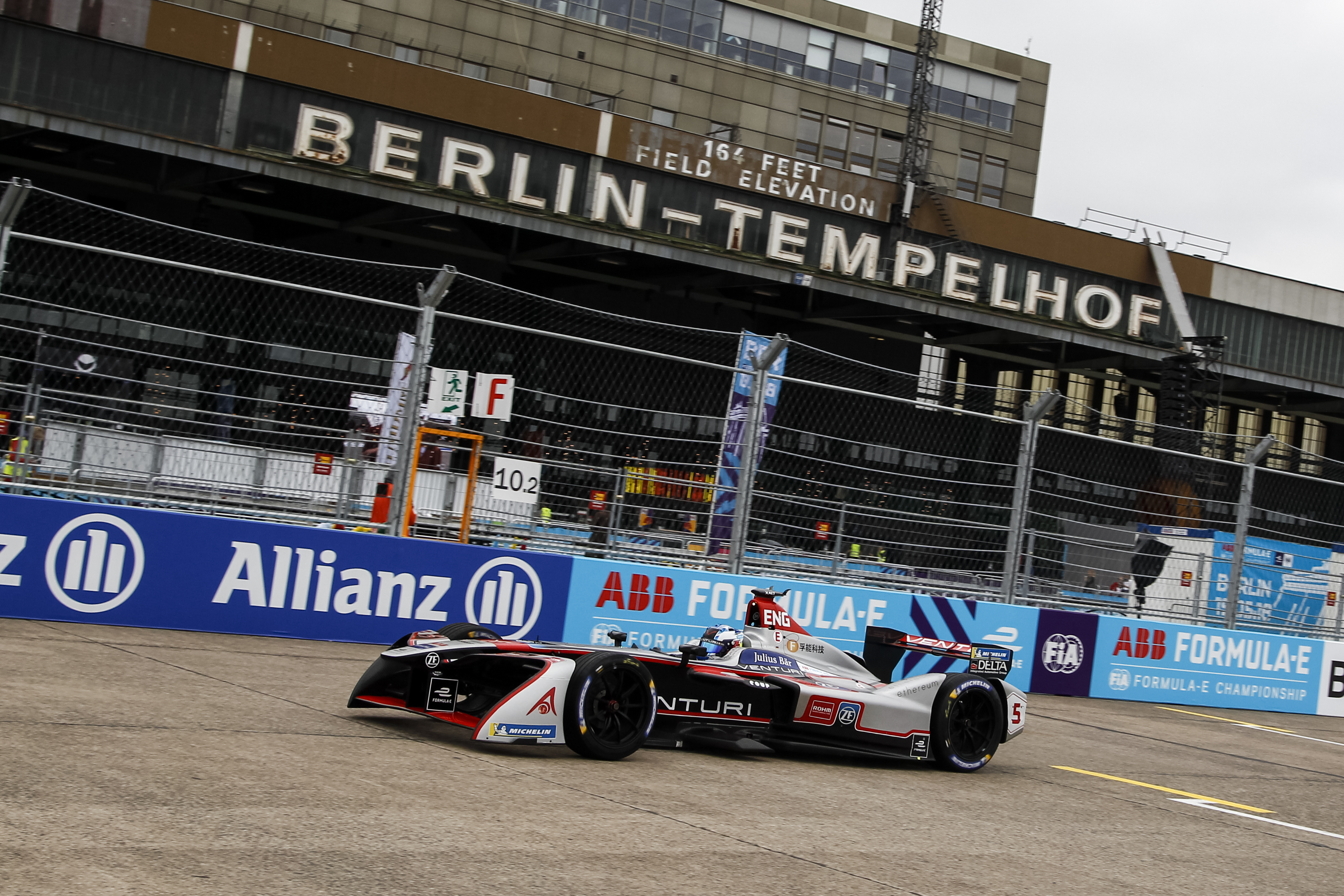Electric race cars– the big effects of small differences
05/21/2018
May 18th, 2018 in Berlin: The sky is gray; it looks like it is going to be raining soon. Will there be rain? If so, this would be the first race in rain in four years of Formula E.
But Maro Engel stays calm. He is one of the two drivers for the Venturi team. He is an experienced racing driver and has driven in DTM and GT cars. And he knows that there are many differences between driving an electric race car and driving a conventional race car with combustion engine.

It is well known, that electric cars are much quieter. That is nice for the audience and as well for the drivers. Another interesting fact is that the electric car accelerates with full power from the beginning. A combustion engine needs a certain number of revolutions per minute to get going. In an electric race car, it is especially important to not go full throttle at the start, because the wheels would spin, meaning a waste of precious energy.
In fact the real challenge in racing with an electric race car is energy management. Capacity and temperature of the battery has to be watched at all times. There is for example the recuperation: When braking, part of the energy can be recovered. On one hand, this is an advantage, but on the other hand it can be disadvantageous as well: Recuperation heats the battery and with increasing temperature the capacity decreases. The driver must avoid braking too much or too strong.
This means Maro Engel always has to take the consequences of his actions into account. Driving errors have two main consequences: Lost lap time and lost energy, which will be missing later in the race.
These differences make driving with electric cars much more complex than driving traditional race cars. So finally rain would not be the biggest challenge in a Formula E race.

The same car for every team
Did you know that all teams use the same car? Own developments are only allowed for certain parts of the drive system. The battery in particular is the same for all cars and for all teams. It’s capacity however is not high enough to last the complete race. That’s why every driver has two cars. After around half of the race, when the battery runs low, every driver has to come in for a pit stop. There he switches to his other car to continue the race with a fully charged battery.
And that is, unlike for example in Formula 1, the only pit stop. There are no other changes allowed in Formula E, even the tires must last the whole race. Indeed, even the number of tires used on one racing weekend including trainings and qualifying is strictly limited.
This is an important point of the sustainability concept of the Formula E. In fact this also involves that all teams use the same tires: no slicks like in Formula 1, but all-weather tires with tread. Thinking of a rainy weekend, it would not have a huge influence on the team performance.
Quite the contrary, the weather actually should not be too nice. Warm temperatures mean the battery gets hot fast, reducing the capacity. The best racing conditions are met at ambient temperatures of 15 degree Celsius and below.
Charging the batteries
Formula E wants to be ecological beyond just using electric motors. Everyone knows the energy for the batteries has to come from somewhere. Charging the batteries of all teams several times at one weekend would seriously affect the city’s power. Burning coal or gas to produce the energy would be somewhat ridiculous. Instead a generator burning glycerin is used to produce the energy for all electric cars. The glycerin is a by-product of the biodiesel production and burns without noxious fumes. The CO2 matches the CO2 the plants needed for growing. So, the glycerin is climate-neutral.
Every team charges two of its cars at the same time. At ten teams, the generator needs to produce enough power to charge twenty cars at once.
In the night before the race, the teams start the cell balancing procedure. Optimal cell balancing means optimal capacity. Especially after the first two or three races of a season the effect is detectable: The capacity of the battery increases.
Nice morning in Berlin
On the morning of the race, there is no sign of rain anymore. Instead the sun is shining brightly, no clouds anywhere. The Formula E’s run on good weather continues.
And for sure, the good weather helps bringing people to the race. Already for the qualifying the grandstands were full of fans. Four German drivers are a magnet for visitors in Berlin, even though the race here is secluded in contrast to other cities, where the E-Prix is held on normal streets. There people can stumble upon the race and keep watching. That cannot happen in Berlin, where the race is held on the former airport area of Berlin Tempelhof.
The time between the trainings, the qualifying and the race is filled with entertainment and also information regarding electric vehicles and the Formula E. The highlight is the presentation of next season’s car to the public. The biggest change to the current car will be the battery: Its capacity will be twice as high as the one used this season, meaning the drivers will not have to change cars in the middle of the race. Despite the much bigger capacity, the weight of the battery only increases by roughly ten percent.

The race
If you are not on your seat when the race starts, you probably won’t realize it. The cars are very quiet. You only hear a whistling sound when they go by, there is more tire noise than engine noise.
The result of the race is determined by the driver’s skills. But of course also the car plays a role. Even though every team uses the same car, as said before, some parts are developed by the teams themselves. These are the engine, the inverter, the gears and the cooling systems.
One example is the inverter in Venturi’s car, which provided by the technical sponsor ROHM Semiconductor. The cars in Formula E do not use DC-motors, but synchronous motors. These need an inverter to convert the DC-voltage of the battery into a three-phase voltage. The inverter can also be used as rectifier for re cuperation.
ROHM uses SiC components in the inverter. The new inverter for this season is the first one to be completely based on SiC. This reduced the size drastically and further increased the efficiency.
And an efficient car is what a racing driver like Maro Engel needs. In the end, it is not a bad day for him, rain or no rain. He reaches eighth place and collects four points in the championship.
